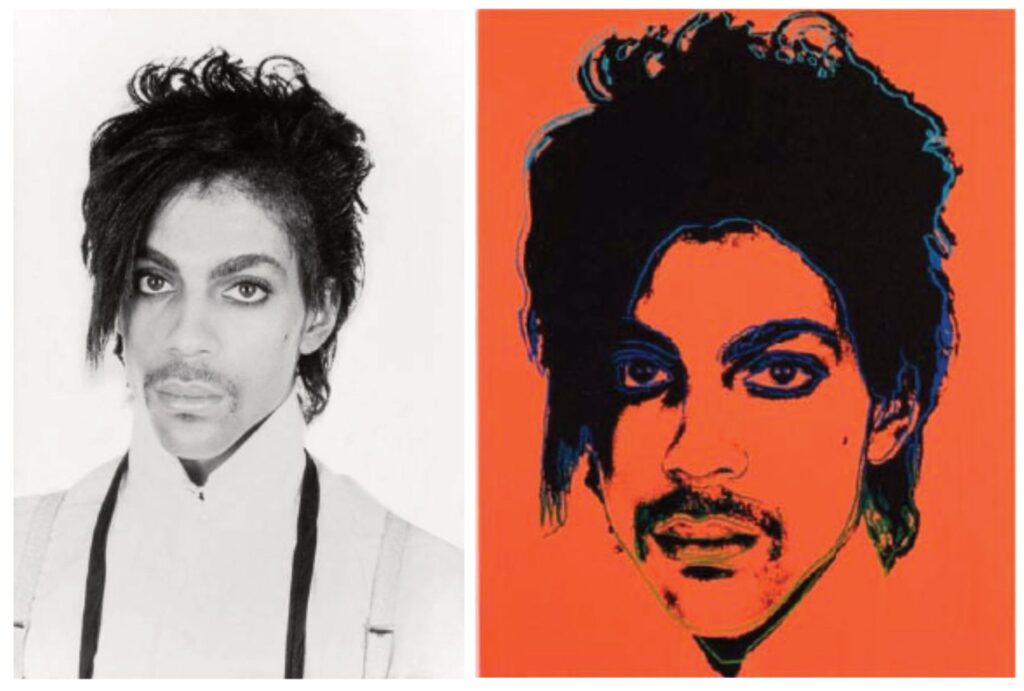Warhol Fair Use Ruling
The importance of clarity when it comes to legal decisions that impact artists and creatives is essential in intellectual property analysis and practice. Today, I aim to provide you with an in-depth analysis of the recent Supreme Court ruling on the copyright dispute involving Andy Warhol and his portraits of Prince. This ruling is of great significance, as it delves into the complexities of intellectual property law, fair use, and the delicate balance between creativity and infringement.

Intellectual Property Law and Fair Use:
In order to grasp the Supreme Court’s Warhol fair use ruling, we must first explore the foundations of intellectual property law. Copyrights exist to protect the rights of creators, granting them exclusive control over their original works. However, fair use acts as a crucial limitation on these rights, allowing certain uses of copyrighted material without the need for explicit permission.
The Fair Use Doctrine:
Fair use is a legal doctrine designed to strike a balance between the interests of creators and the broader public. It acknowledges that certain uses of copyrighted material contribute to the enrichment of society, fostering innovation, creativity, and the free exchange of ideas. The concept of fair use allows for transformative uses of copyrighted works, facilitating the emergence of new and original expressions.
The Andy Warhol Case:
Now, let’s turn our attention to the copyright dispute at hand. The case centered around Andy Warhol’s creation of a series of portraits based on a photograph taken by Lynn Goldsmith. Goldsmith argued that Warhol’s use of her photograph constituted copyright infringement, as it was done without her permission.
The Supreme Court’s “Warhol Fair Use Ruling”:
In its ruling, the Supreme Court made a significant decision in favor of Andy Warhol and his artistic practice. The Court recognized that Warhol’s portraits of Prince were not mere replicas of Goldsmith’s photograph. Instead, they constituted distinct artistic expressions infused with Warhol’s signature style and transformative vision. By applying the fair use doctrine, the Court acknowledged the creative reinterpretation by Warhol, ultimately protecting it as a legitimate artistic endeavor.
Implications for Artists and Creatives of the Warhol Fair Use Ruling:
This ruling has far-reaching implications for artists and creatives. It reinforces the notion that fair use plays a vital role in fostering innovation, cultural enrichment, and the continued progress of art. By acknowledging the transformative nature of Warhol’s work, the Court has emphasized the importance of artistic freedom and creative expression.
The Boundaries of Creative Expression:
The Warhol fair use Ruling also sparks a broader discussion on the boundaries of creative expression and the potential dangers of excessive copyright protection. It recognizes that creativity often thrives on building upon existing works, reimagining them, and adding new perspectives. By carefully considering fair use and transformative qualities, we can strike a balance that allows for artistic innovation while respecting the rights of original creators.
Maintaining the Balance:
It is crucial to understand that fair use is not an absolute defense. Each case must be examined on its individual merits, considering factors such as the purpose and character of the use, the nature of the copyrighted work, the amount and substantiality of the portion used, and the potential impact on the market value of the original work. We must preserve the delicate balance between the rights of creators and the public’s interest in accessing and engaging with creative works.
In conclusion, the Supreme Court’s Warhol fair use Ruling in the copyright dispute marks a significant milestone for artists and creatives. By recognizing the transformative nature of Warhol’s work and its contribution to artistic development, the Court has reaffirmed the importance of fair use in fostering a vibrant cultural landscape.
Want to understand how the Warhol fair use Ruling could impact your creative rights?
Book a consultation with Zamani Thomas Legal to get clarity on how recent copyright decisions shape your ability to remix, reinterpret, and protect your work.
